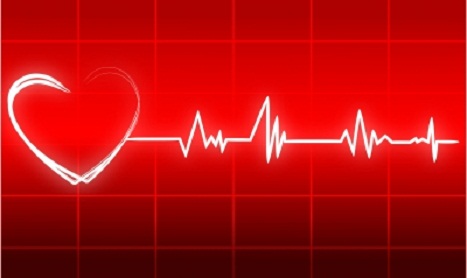 Ever been working out on a piece of cardio equipment and wondered what the heart-rate monitors are really used for? Your heart rate can be a good addition to your fitness testing as it’s an indicator of how strong your heart is getting, plus you can also use it to help you get a better workout!
Ever been working out on a piece of cardio equipment and wondered what the heart-rate monitors are really used for? Your heart rate can be a good addition to your fitness testing as it’s an indicator of how strong your heart is getting, plus you can also use it to help you get a better workout!
Using your heart-rate to get a better workout
Your heart-rate is measured in beats per minute (BPM) and can be a good indication of whether you are pushing yourself as hard as your should. First you need to work out your maximum heart rate (MHR) by subtracting your age from 220. For example, if you are 25 years old:
You can then use this to calculate your ideal training zones. Keep an eye on your heart rate every now and then while you’re training to ensure you’re in the best ‘zone’ for your goals and adjust how hard you’re working accordingly:
| 60% – 70% of MHR | Start burning fat and improving your heart’s health (longer workouts) |
| 70% – 80% of MHR | Endurance training |
| 80% – 90% of MHR | Athletic conditioning and speed training (shorter workouts) |
Remember, you will burn fat by training in any of the above zones; as long as you’re workout out, you’re burning calories.
In the example of a 25-year-old, the training zones would be:
| 60% – 70% of MHR | 117 bpm – 137 bpm |
| 70% – 80% of MHR | 137 bpm – 156 bpm |
| 80% – 90% of MHR | 156 bpm – 176 bpm |
How to check your heart rate while exercising
Many cardio machines (such as exercycles, crosstrainers and treadmills) have silver metal pads on the handle bars. Grip these every now and then during your workout and it should give you your current heart rate. Alternatively you can buy wristwatches that have a built in heart-rate monitor – you should be able to get these from your local sporting good store.
How to check your heart rate for fitness testing
When you exercise, it’s not just the muscles you can see that are strengthening up, your heart is doing it too! As it gets stronger, it doesn’t have to work as hard to pump the same amount of blood around your body so it will usually begin to beat slower.
If you want to check your resting heart-rate for fitness testing purposes, grab a watch with a second hand and sit down without moving for at least 5-10 minutes beforehand. When you move around, your heart beats faster so it won’t be your proper resting heart rate!
Use your index and middle finger, and firmly press/feel around until your feel a pulse in one of these areas:
- Your neck to the side of your throat just under your chin.
- Your wrist by facing your palm towards you and running your fingers down the length of your thumb to your wrist (should end up in a soft area between the wrist bones).
Record how many times it ‘beats’ over one minute. The fitter you are the lower this number will be – a normal reading is around 60-100 beats per minute. However, athletes can get as low as 40 BPM!
Photo / FreeDigitalPhotos.net – digitalart

